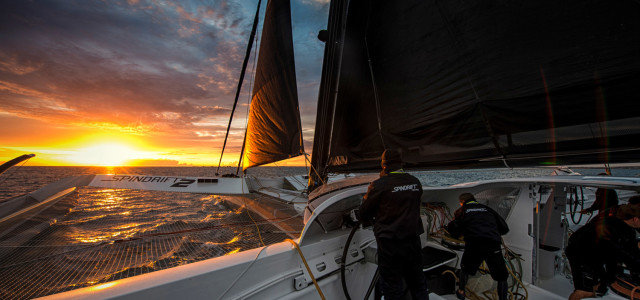
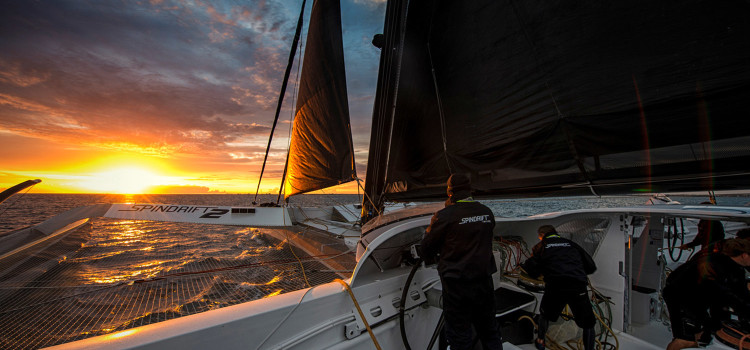
Sailing and Ocean, Spindrift 2 from crew to solo racing
EnglishMultiscafiOceanoSpindrift 2Vela 18 Febbraio 2014 Zerogradinord 0

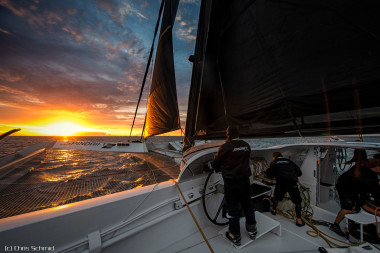 Saint Philibert – Since December a team of twenty have been working in the Spindrift boatyard in Lorient to adapt the maxi-trimaran Spindrift 2 for a 2014 programme with the dual requirement of the crewed North Atlantic record attempt and the solo Route du Rhum. They will be working for four months until April.
Saint Philibert – Since December a team of twenty have been working in the Spindrift boatyard in Lorient to adapt the maxi-trimaran Spindrift 2 for a 2014 programme with the dual requirement of the crewed North Atlantic record attempt and the solo Route du Rhum. They will be working for four months until April.
“With Spindrift racing, we are tackling the records held by this boat, which is the largest in its class. To beat them, we must optimise the machine,” Antoine Carraz, the technical manager and a sailor with Spindrift racing explains. “This year, we are doing crewed and solo. We made choices to be able to perform in both pursuits. It also allows us to explore avenues of innovation for the Jules Verne Trophy, the flagship objective of our campaign with Spindrift 2.“
Structural work
Precise with his words and calm despite the size of his task, Antoine begins at the bow: “The main change concerns the mast, which was shortened by six metres to make the boat more manoeuvrable when solo. With 20% less sail area, Spindrift 2 will also be lighter this season while remaining high-performance. It also involves changing how the mast is attached to the boat. Some U-bolts are removed and a new one created, for example the staysail stay, a very structural part that supports the mast.”
There are three of the U-bolts in total. They are pieces of carbon fixed to the deck, which secure the cables that carry the sails, ie, these parts attach the engine of the boat (the mast and sails) to the chassis (the frame). “The main U-bolt has a working load of 35 tonnes,” Antoine, a mechanical and structural engineer, says. “Currently, we have two people who have been working for three months on just this complex area of the boat.”
Losing weight: sails, wing mast, centreboard…
Like in a watch, everything is connected on a boat. Change one element and it affects everything. By reducing the rigging, the Spindrift racing team not only loses some weight up high, but also reduces the sail plan. “Lightness is the crux of the multihull,” Antoine continues. “Remove the large gennaker which is not manoeuvrable solo and is too big for the wind in the North Atlantic and it saves 200 kilos. The same for the solent sail, where we can save another 300 kilos. We also removed the wing mast. This system allows you to angle the rig from one side to the other when the trimaran is heeling. But when solo, you sail with the main hull in the water. It is heavy equipment with a very low performance gain for the solo skipper. For the North Atlantic, which will be done on one tack with a crew, we can swing the mast steadily from the start. So we decided to leave out the jacks and the hydraulic system, a new gain of 400 kilos.”
By contrast there are no big changes to the rudders and foils, which are identical, only the centreboard will be new. “In the design of the boat with the idea of racing around the world, the original centreboard was a trim tab (a rear flap like on an airplane wing to better navigate upwind),” Antoine says. “In the Atlantic like on the Jules Verne, our journey will be predominantly downwind sailing where we will sail with the centreboard raised. So, we have a new part without a trib tab, lighter by 200 kilos and with an optimised form fit for surfing.”
Finally, there are dozens of details on these boats which are not contributing to the virtuous circle of the maximum load shedding. Kilos were won last year with the Spectra nets, the bunks and the kitchen will be dismantled before Rhum and a new, lighter chart table cards is also being made. “We assess each part that has been removed to gain every single gramme. We weigh everything for reassembly and take stock. In total, if we can lose two tonnes, it’s 10% of the weight of the boat, which is huge.”
The ‘Géo Trouvetout’ of Spindrift racing
Despite the biblical scale of Spindrift 2, Yann Guichard has just two arms and two legs to control it solo; to trim several hundred square metres of sail, take-drop a reef, unfurl-furl a headsail – exhausting moments even for six grinders windmilling on the three columns of the crewed version of the cockpit. For the Route du Rhum, Yann will keep two columns, one each side, and is also adding a bike to use the strength of the lower body, as did Franck Cammas during his victory in 2010.
Nevertheless, a quick glance is enough to realise that at the helm it is difficult for Yann to keep on top of the demands of the sails. The autopilots are thus the cornerstone of the transatlantic solo. The solution found by Spindrift racing is ingenious, as Anthony explains: “The boat is too big to use hydraulic jacks. But as it is very large, it is also very stable, so there are few helm corrections to make. So, we are using the engines of pilots from pleasure boats with a system invented by the team. We have already tested the device on the delivery trip from Miami last year and it works very well.”
The life of the solo sailor
Finally, the dimensions of the trimaran still dictate their laws to the skipper who, for safety and for performance, will remain on permanent watch on deck. “We are installing Yann’s living quarters outside, sheltered under the cockpit cap. It will have his computer screens, his pilot controls, everything he needs to hand and his bunk to rest as soon as he can,” Antoine concludes before leaving us to get on with a project that you can see is unique.

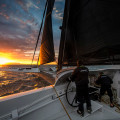
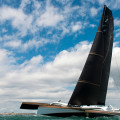
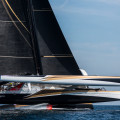
No comments so far.
Be first to leave comment below.